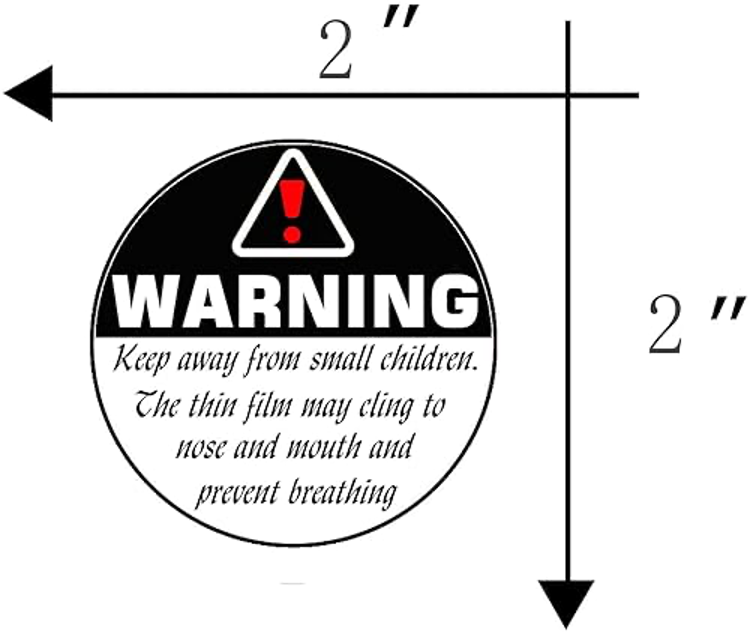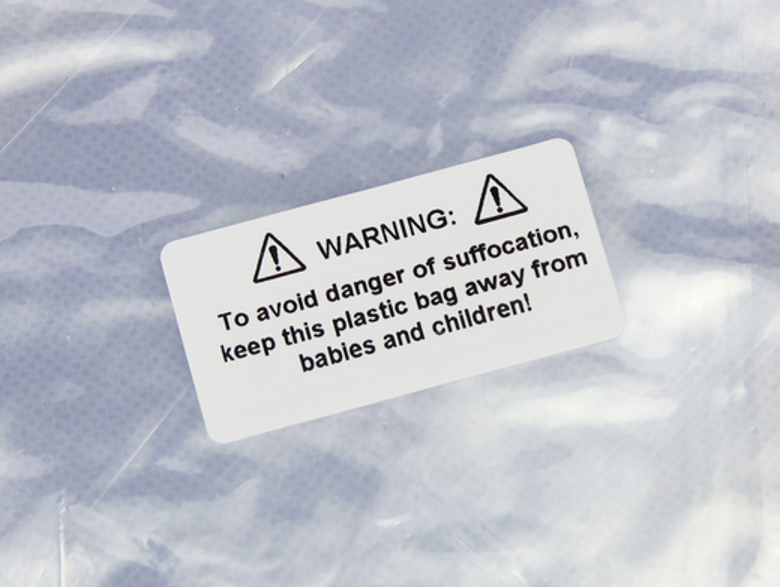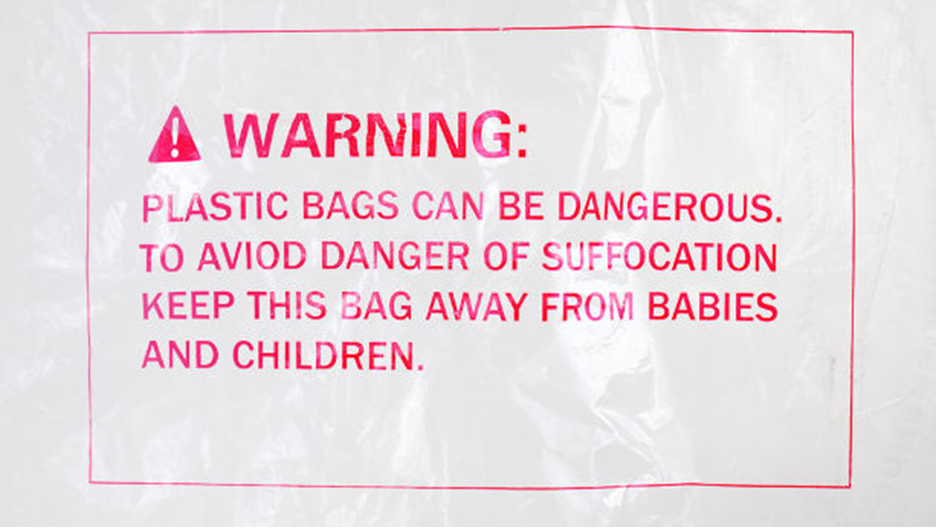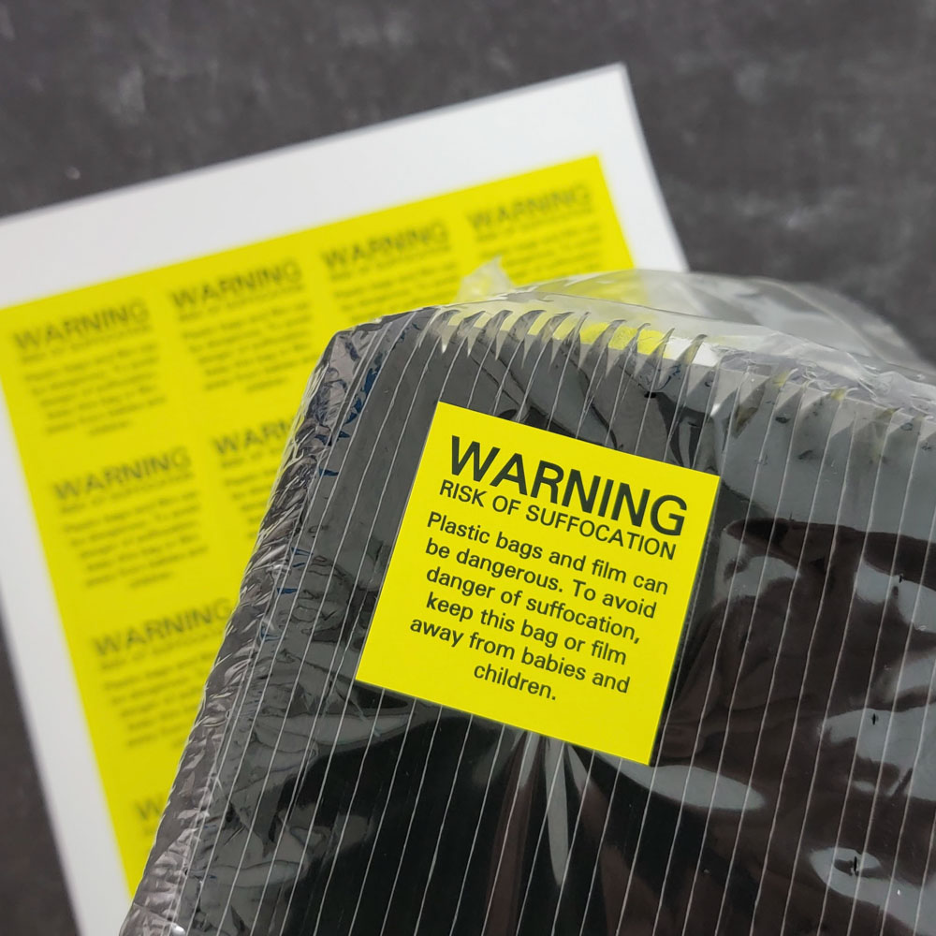
Introduction
Poly bags are among the most common packaging materials used by hundreds of business entities across plenty of industries globally. While affordable and lightweight, sadly, these plastic bags can create some severe suffocation hazards, especially for young kids, a reason why they need to have a suffocation warning.
As a distributor or manufacturer of plastic bags, ensuring proper suffocation warning labels is not only a legal obligation but a safety measure, too. A plastic bag warning helps avoid unnecessary harm or death.

According to the Consumer Product Safety Commission, in the United States alone, an average of 25 children suffocate from plastic bags every year. Clear suffocation warnings can help in raising awareness and eventually prevent plenty of avoidable tragedies from occurring.
What Are Suffocation Warnings, and Why Are They Important?
While very useful, especially for packaging and transporting many products, plastic bags can be highly dangerous if misused. These thin plastic bags can easily cling to the face, restricting airflow, especially if placed over the mouth and nose, a reason why plastic bags with suffocation warnings are crucial.

Besides safety concerns, plenty of companies and business entities put suffocation warnings on their plastic bags to protect themselves if someone gets hurt. In other words, it’s also about legal liability should a lawsuit happen.
All plastic bags that people use on a daily basis pose a huge suffocation risk, a big reason why a suffocation warning is essential. If you have small children in your house, it’s vital to ensure that you properly dispose of all plastic bags and other wrapping materials immediately.
Close to 4 million children are born in the United States each year, with the country reporting an infant mortality rate of 6.06/1000 live births, with 0.1% of such occurring due to suffocation caused by plastic bags.
Legal Requirements for Suffocation Warnings
In the United States, plastic bag suffocation warnings are overseen or rather governed by industry standards and federal regulations, primarily under the enforcement of the Consumer Product Safety Commission (CPSC).
In the U.S., you’ll find several legal requirements for suffocation warnings on plastic bags. First, the CPSC Enforcement requires suffocation warnings on plastic bags that are 1 mil thick. CPSC Enforcement actions alongside recalls target non-compliant products that lack proper warnings.
Plastic bags that require suffocation warnings are those used for products that are meant for use in a household and domestic setting. Furthermore, plastic bags designed in a way that might encourage kids to use them as toys require suffocation warnings.
Cities and states across the U.S. differ in the specific language that they suggest when using a suffocation warning. However, most use the warning that appears below.
Warning: To avoid the danger of suffocation, keep this plastic bag away from babies and children. Do not use this bag in cribs, beds, carriages, or playpens. This bag is not a toy.

The law requires the warning statement to be legible and imprinted in a prominent location to place on all plastic bags or appear on a label attached to the plastic bag.
Plastic bags that are meant for industrial use alongside those that companies and individuals use for food products but weigh less than 5 pounds or less are exempted from suffocation warnings.
Do I Need Suffocation Warnings on Heat Shrink Merchandise
Heat shrink wraps shrink the moment they get heated and are mostly used for packaging items such as toys, food, and DVDs, thereby bundling items together to create tamper-evident seals. Regular plastic wraps that carry a suffocation warning are made from polyethylene (PE).
Most companies use regular plastic in bundling products/items, protecting goods while in transit, and securing pallets. But do heat shrinks require any suffocation warning?

Just like regular plastic bags with suffocation warnings, the same is required for heat shrink packaging, especially if the heat shrink packaging forms a bag-like structure that has an opening of 5 inches or more.
Some of the best practices to follow to ensure compliance with heat shrink packaging regulations include compliance with CPSC requirements meant for suffocation warnings, proper design packaging, and implementing quality control at all times.
How to Properly Display Suffocation Warnings
When displaying the suffocation warning on plastic bags, the strategic placement of such warnings is crucial. If such warnings aren’t properly displayed in areas where customers can easily see or find them, it would mean that a manufacturer is violating industry rules and standards.
For any plastic bag warning, manufacturers are required to use a bold and condensed sans-serif font to aid clarity. While the font size mostly varies, it should be from 10pt to 36pt, depending on the size of the plastic bag.

Below is a suffocation warning used by Amazon on their plastic packaging bags:
WARNING: SUFFOCATION HAZARD!!!
Plastic bags can be dangerous. To prevent suffocation:
· Keep this bag away from babies, children, and pets.
· Never use in cribs, beds, carriages, or playpens.
· Not a toy. Do not allow children to play with plastic bags.
· Always supervise children near plastic bags.
· Dispose of responsibly by tying knots or recycling.
With clear and visible plastic bag warning signs, customers will be able to know how to properly handle them (especially around small children), in addition to their method of disposal or recycling, if possible to be recycled.
Common Mistakes and How to Avoid Them
We noticed several compliance mistakes that businesses make when putting a suffocation warning on plastic bags, poor or incorrect wording topping the list. Some use small texts that might not be visible to some people, while others place a plastic bag warning in areas that are not easily visible, such as at the bottom of the poly bag.

Language and translation are other issues that some poly bag manufacturers tend to ignore. Plastic bag manufacturers operating in several countries or regions must include the suffocation warning in several languages.
Some plastic bag manufacturers also fail to follow regional regulations when adding a plastic bag warning on their products. Different states and countries tend to have different rules.
In 2016, Dollar Tree, a discount variety store chain, was sued by the CPSC for using plastic packaging that lacked federally mandated suffocation warnings. For that reason, they had to pay a fine of $1.2 million and comply with CPSC regulations.
Besides Dollar Tree, in 2009, Mattel’s subsidiary company, Fisher-Price, had to recall over 7 million toys in the market due to packaging hazards, mostly plastic bags lacking suffocation warnings. Even though it didn’t face a direct lawsuit, Mattel had to deal with reputational and financial damage.
To ensure compliance with suffocation warning labels, below are important steps that manufacturers need to follow:
1. Understand the applicable regulations
2. Standardize all the warning labels
3. Collaborate with manufacturers, online retailers, and suppliers
4. Test packaging for compliance
5. Monitor changes in regulations
6. Prepare for legal challenges and recall
7. Leverage accredited third-party certifications
8. Review customer feedback
Frequently Asked Questions
What types of plastic bags require suffocation warnings?
Suffocation labeling is necessary for all polyethylene bags that are intended for household use and those used for packaging products that weigh 5 pounds or less.
Are suffocation warnings necessary on poly mailers or shipping bags?
Suffocation warnings or labeling aren’t generally required on shipping bags or poly mailers since they are mostly thicker than the required threshold of 1 mil or less.
Do I need a suffocation warning for smaller plastic bags used in packaging items?
Absolutely! If you’re using plastic bags with openings of 5 inches or larger when flat for your packaging needs, you need to use some bags with a suffocation warning.
What should the warning text say?
The plastic bag warning should say that to avoid the danger of suffocation, the plastic bag should be kept away from children or placed anywhere where children play or sleep.
How do I ensure my products are compliant with suffocation warning regulations?
You need to check out local suffocation warning regulations, be alert on any regulation changes, and seek suffocation warning certification from accredited third-party groups that check for compliance.
Best Practices for Plastic Bag Safety and Compliance
To minimize the risks of suffocation, make sure that you store the bags out of children’s reach and that they carry a plastic bag warning label.

To significantly reduce instances of suffocation, especially for small children, make sure that you either recycle or dispose of the plastic bags immediately after use.
As a manufacturer, you need to subscribe to plastic bag suffocation warning alerts while seeking the assistance of compliance bodies to check your products for compliance.
Plastic bag manufacturers can use several tools and resources at their disposal to ensure that their products are compliant with set plastic bag warning regulations. For instance, they can use compliance management software such as Assent Compliance, LexisNexis, and SAP EHS to ensure their products are safe.
Conclusion
While convenient to use and readily available, plastic bags can pose a real threat and result in suffocation, especially to small children. A plastic bag suffocation warning is not only important for safety concerns but also for legal compliance.
Business entities that wish to remain competitive in the face of increased competition need to ensure that their packaging practices comply with set plastic bag warning standards.
Call to Action
Are you looking for some of the best plastic bag manufacturers and experts who understand everything to do with poly bags with suffocation warnings? At Tendee Accessory, rest assured of finding industry-tested experts in the manufacture of plastic bags that come with suffocation warnings.





